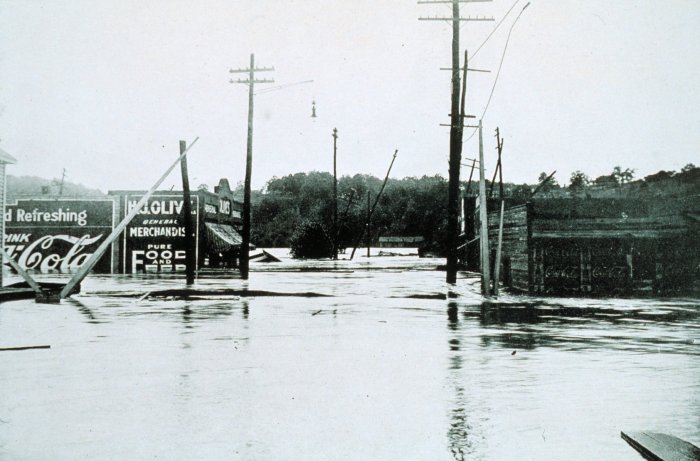REVIEW: Lesson Summary
Completion requirements
Summary

1916 Flood in Asheville, NC. Photo courtesy of Wikimedia.
- A sudden release of energy stored in rocks causes an earthquake.
- Liquefaction is caused by the shaking of water-saturated sediments during an earthquake.
- Liquefaction causes the ground to lose the strength to support structures and roads
- Seismic waves rarely kill anyone. Structures falling on people and fires or tsunamis after the earthquake cause many more fatalities
- City planning can lessen the damage done by earthquakes
- Population density and ground type can affect the number of fatalities
- Tsunami have relatively low wave heights, so they are not noticeable until they move up a shore
- Tsunami have long wavelengths.
- Tsunami warning systems have been placed in most locations where tsunamis are possible.
- Hurricanes originate over warm tropical oceans
- The damage hurricanes cause is largely due to storm surge, high winds and heavy rains
- Hurricane Katrina was the one of the costliest hurricanes
- when the amount of water in a drainage exceeds the capacity of the drainage, there is a flood
- Floods are made worse when vegetation is cleared, when the land is already soaked or when hillsides have been logged
- People build dams and levees to protect from flooding
- Floods are a source of nutrients on a floodplain
- It's hard to define a heat wave or a drought because these phenomena are deviations from normal conditions in a region
- A heat wave is caused by a warm, stationary high pressure cell
- Drought has severe consequences depending on its duration and intensity
Last modified: Thursday, 16 February 2017, 2:27 PM